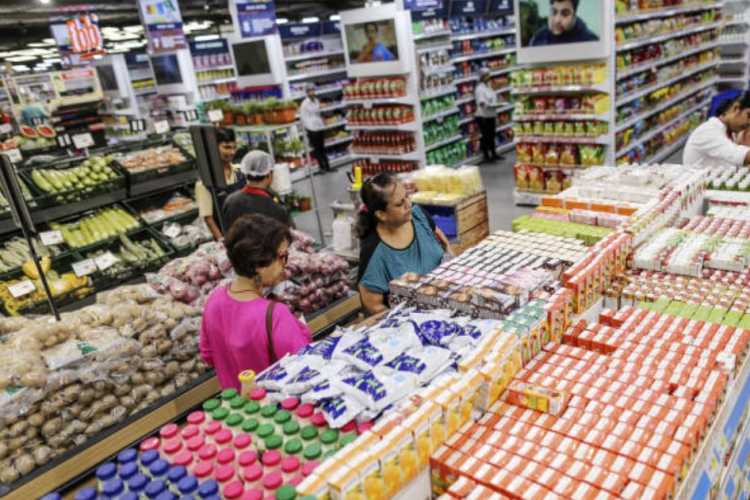India is undergoing a quiet but consequential socioeconomic transformation. The gradual shift from joint families to nuclear households, and from traditional Kirana stores to retail stores, reflects more than just evolving consumer preferences. It signals a deeper change in the country’s societal norms and economic structures. These transitions, while uneven across regions, point to a broader alignment with global trends — greater individual autonomy, urban migration, and the rise of market-driven efficiencies.
For centuries, the joint family was the cornerstone of Indian society — an institution that not only preserved cultural traditions but also functioned as an economic unit. These families pooled labour and capital for agricultural work, family-run businesses, and caregiving. According to NFHS-5 data, the share of nuclear families in India rose from 56% in 2016 to 58.2% in 2019–21, while the average household size fell from 4.6 to 4.4 members. In southern states, nuclear families already make up nearly 69% of all households.
READ | The digital fraud epidemic calls for stronger cybersecurity measures
This demographic shift is not merely cultural, it is deeply economic. Urbanisation, industrialisation, and the mechanisation of agriculture have chipped away at the joint family model. As younger generations migrate to cities for education and employment, they establish smaller, independent units. Access to higher education, dual-income households, and changing gender roles have also empowered families to chart new trajectories.
Nuclear families and the economy
The economic implications are huge. Nuclear families, often with both partners working and fewer dependents, enjoy higher per-capita disposable incomes. These families are more liberal in their spending habits, fuelling India’s premiumisation trend in fast-moving consumer goods. They shop across more product categories and are more likely to choose higher-end variants in categories like handwash, fabric softeners, bodywash, and tea.
In other words, the nuclearisation of Indian households is directly influencing consumption behaviour. It has redefined aspirations, from owning compact homes to demanding convenience in the form of ready-to-cook meals, day-care services, and digital services.
However, the shift comes with trade-offs. The erosion of the joint family weakens traditional caregiving structures. Elderly family members, once supported by a web of relatives, now often rely on fewer caregivers or institutional solutions. Working parents juggle increased stress and childcare costs, while emotional support during crises may be in shorter supply. Social isolation and loneliness are rising concerns, especially in urban India.
Disruption by retail stores
If families are shrinking, India’s retail ambitions are expanding at an unprecedented pace. The humble Kirana store, once the backbone of Indian retail, is facing the onslaught of organized giants. For decades, Kiranas dominated with hyperlocal service, personalized credit, and deep customer relationships. They still contribute more than 10% to GDP and employ 8% of the workforce.
Yet, organized retail is catching up fast. Valued at $28 billion in 2021, the organized grocery retail segment is projected by Deloitte to balloon to $235 billion by 2030. Urbanization, aspirational consumers, and digital payments are tilting the balance toward supermarkets and hypermarkets.
The expansion hasn’t been without casualties. According to the All India Consumer Products Distributors Federation (AICPDF), around 200,000 Kirana stores shut down in 2023 alone. These closures reflect the intense pressure small retailers face from supply chain efficiencies and deep discounting by large chains.
Creative destruction and common drivers
These two transformations — one social, the other economic — might seem opposed: families moving from large to small, and stores from small to mega. But both are powered by the same gales of change. Economist Joseph Schumpeter called it “creative destruction” where old systems give way to new due to innovation and evolving economic logic.
In both cases, modernization is key. In families, mechanized farming and industrial jobs reduced the economic necessity of living together. In retail, digital infrastructure, cold-chain logistics, and consumer analytics enabled scaling. In both, changing aspirations and improved education levels spurred a shift toward autonomy and choice.
Role of policy and infrastructure
This evolution isn’t happening in a vacuum. Government policies have nudged it along. Subsidies for farm mechanization made large families less necessary. Infrastructure projects and urban housing schemes encouraged independent living. In retail, roads, e-commerce platforms, and FDI norms have all contributed to the proliferation of organized outlets.
Policymakers now face the challenge of crafting a balanced response. Urban planning must consider the realities of nuclear families: smaller homes, accessible child and elder care, and robust public transport. In retail, empowering Kirana stores with digital tools and financial support can help them adapt rather than perish.
Lessons for a changing South Asia
India’s experience offers crucial insights for South Asian neighbours undergoing similar transitions. Change is inevitable, but its pace and inclusivity depend on institutional support. Small retailers and traditional family structures don’t need to disappear; they need help adapting. Digital literacy, social safety nets, and hybrid models can help bridge old and new.
India’s twin transitions—from joint to nuclear families and from Kiranas to superstores—mirror the country’s broader journey: a leap into modernity while navigating its roots. These transformations come with gains in autonomy, efficiency, and aspiration. But they also risk fraying the social safety nets that once made India’s communities resilient.
To tackle this change, India must strike a balance. Encourage innovation, but not at the cost of inclusion. Celebrate progress, but not at the expense of cohesion. In doing so, India can write a uniquely pluralistic story—one where tradition and modernity don’t compete, but collaborate.
Dr Md Abdul Latif is Additional Director, Bangladesh Institute of Governance and Management, Dhaka. Nikita Kumari works with Korea Trade-Investment Promotion Agency, New Delhi.

